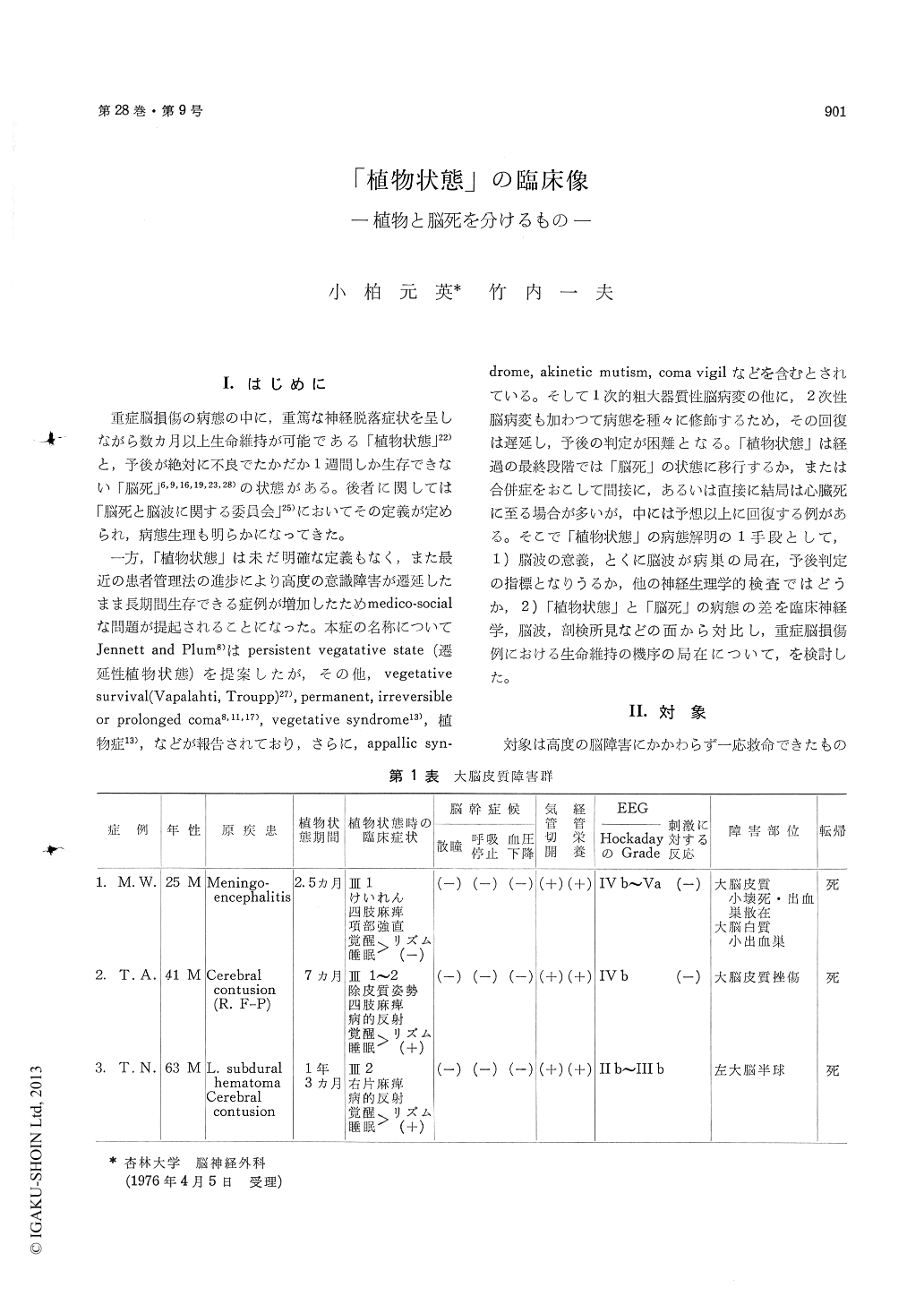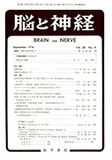Japanese
English
- 有料閲覧
- Abstract 文献概要
- 1ページ目 Look Inside
I.はじめに
重症脳損傷の病態の中に,重篤な神経脱落症状を呈しながら数カ月以上生命維持が可能である「植物状態」22)と,予後が絶対に不良でたかだか1週間しか生存できない「脳死」6,9,16,19,23,28)の状態がある。後者に関しては「脳死と脳波に関する委員会」25)においてその定義が定められ,病態生理も明らかになってきた。
一方,「植物状態」は未だ明確な定義もなく,また最近の患者管理法の進歩により高度の意識障害が遷延したまま長期間生存できる症例が増加したためmedico-socialな問題が提起されることになった。本症の名称についてJennett and Plum8)はpersistent vegatative state (遷延性植物状態)を提案したが,その他,vegetative survival (Vapalahti, Troupp)27), permanent, irreversible or prolonged coma8,11,17), vegetative syndrome13),植物症13),などが報告されており,さらに,appallic syn—drome, akinetic mutism, coma vigilなどを含むとされている。そして1次的粗大器質性脳病変の他に,2次性脳病変も加わつて病態を種々に修飾するため,その回復は遅延し,予後の判定が困難となる。「植物状態」は経過の最終段階では「脳死」の状態に移行するか,または合併症をおこして間接に,あるいは直接に結局は心臓死に至る場合が多いが,中には予想以上に回復する例がある。そこで「植物状態」の病態解明の1手段として,1)脳波の意義,とくに脳波が病巣の局在,予後判定の指標となりうるか,他の神経生理学的検査ではどうか,2)「植物状態」と「脳死」の病態の差を臨床神経学,脳波,剖検所見などの面から対比し,重症脳損傷例における生命維持の機序の局在について,を検討した。
10 cases showing vegetative state and 2 cases of brain death due to severe brain damage were ob-served and the differences of clinicopathological findings between both states were discussed.
The cases of vegetative state can be divided into three groups, first is widespread lesion in the cere-bral cortex, second is in the cerebral white matter and third is in the brain stem. While, the diffuse whole brain damage including the vegetative center of the central nervous system causes brain death. We should like to emphasize that the most im-portant structure to maintain the human life is the vital center in the lower brain stem, and that a human being, in whom only those function can be preserved, is possible to be alive as vegetative state.
Prognostic value of the EEG indicating quality of survival noted in early stage after severe brain damage has not so important as the flat EEG re-vealed in brain death.

Copyright © 1976, Igaku-Shoin Ltd. All rights reserved.


